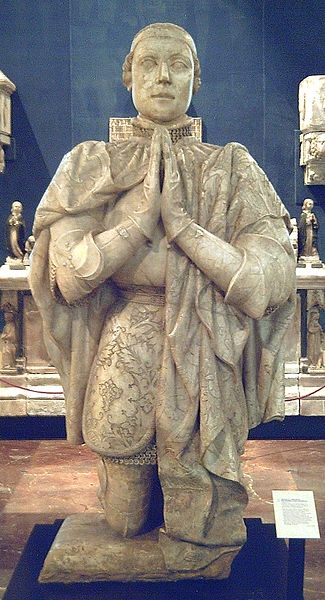Peter the Cruel
by Frederic "Jim" Silva
It must be flattering or else insulting to be a ruler of nations and men and then to have an added title bestowed for posterity by history.
For instance, young King Alexander of Macedonia would probably be flattered by being labelled Alexander the Great. I am sure Suleiman the Magnificent, Peter the Great and Manuel the Fortunate would likewise find little to object to in their added new names.
In Medieval France royal titles took on a more personal slant that was not always flattering Frankish Kings were named Charles the Bald, Louis the Fat and Pepin the Short.
At the other end of the line of descriptive royalty we had Ivan the Terrible of Russia. He must have done more than a couple of things wrong in his time. Then we have our own Portuguese, Peter the Cruel.

History probably tainted Peter with a name he did not wholly deserve. Perhaps Peter the Vengeful would have been more appropriate. Still, because of him, we have one of Portugal's great and tragic love stories.
In the transept of the church of the Santa Maria monastery at Alcobaca lies the tomb of Peter the Cruel directly facing the tomb of his lover Inês de Castro. Here on judgement day the two will rise to face each other and be united again for eternity.
The love affair began when Peter was Crown Prince and heir to the Portuguese throne. His father Afonso IV was still King when Peter married Constança Manuel. Among Constança's ladies in waiting was one Inês de Castro, a beautiful young noblewoman from an influential Spanish family.
Prince Peter fell madly in love with her – much to the objection of his wife, the Portuguese court and his father the King. The romance continued after Constança died in childbirth and then Prince Peter lived openly with his mistress Inês who bore him three children.
Intrigue between the old King and his court swelled as they were ever vigilant to curtail any Spanish influence on Portuguese affairs. Inês was seen as just such a threat. Whilst Peter was away on a campaign the King and council seized Inês, falsely accused her, and then condemned her to death for treason. She was quickly put to death by the King's councillors.
On his return the inconsolable Peter was set for revenge. He made war on his father and relentlessly pursued the three principal councillors involved who had since fled the country. On capturing two of them he had their beating hearts extracted whilst they were still alive: one through the front of his chest and the other from his back. All the while Peter feasted to celebrate his triumph.
On his ascension to the throne Peter declared the deceased Inês his legal wife and rightful queen. Then six years after her death he exhumed her skeletal remains, propped up her corpse on a throne and forced his horror-stricken courtiers to kiss her bony hand in homage.
This gruesome tale should have ended here, but it does not. To inject an element of current interest Dr Jorge Forjaz's genealogy volumes track and trace the direct descendants of the royal lovers right up to today's Macau and California and beyond.
A grandson of the lovers, one Fernando de EçaClick on the SEARCH icon and enter his ID number (43005) to be taken to his personal page took on the name of a town in Galicia which he inherited – Eça. He in turn sired 42 offspring, all with these tenuous royal connections. The 13th in this traceable line from King Peter the Cruel, one António de Eça Lobo de Almeida e CastroClick on the SEARCH icon and enter his ID number (41006) to be taken to his personal page, proceeded to Macau in 1790 where he married Ana Joaquina CarneiroClick on the SEARCH icon and enter his ID number (41005) to be taken to his personal page. The line continued to propagate and be identified.
The Eças of today are probably all descendants of this couple and heirs of this ancient tragedy.